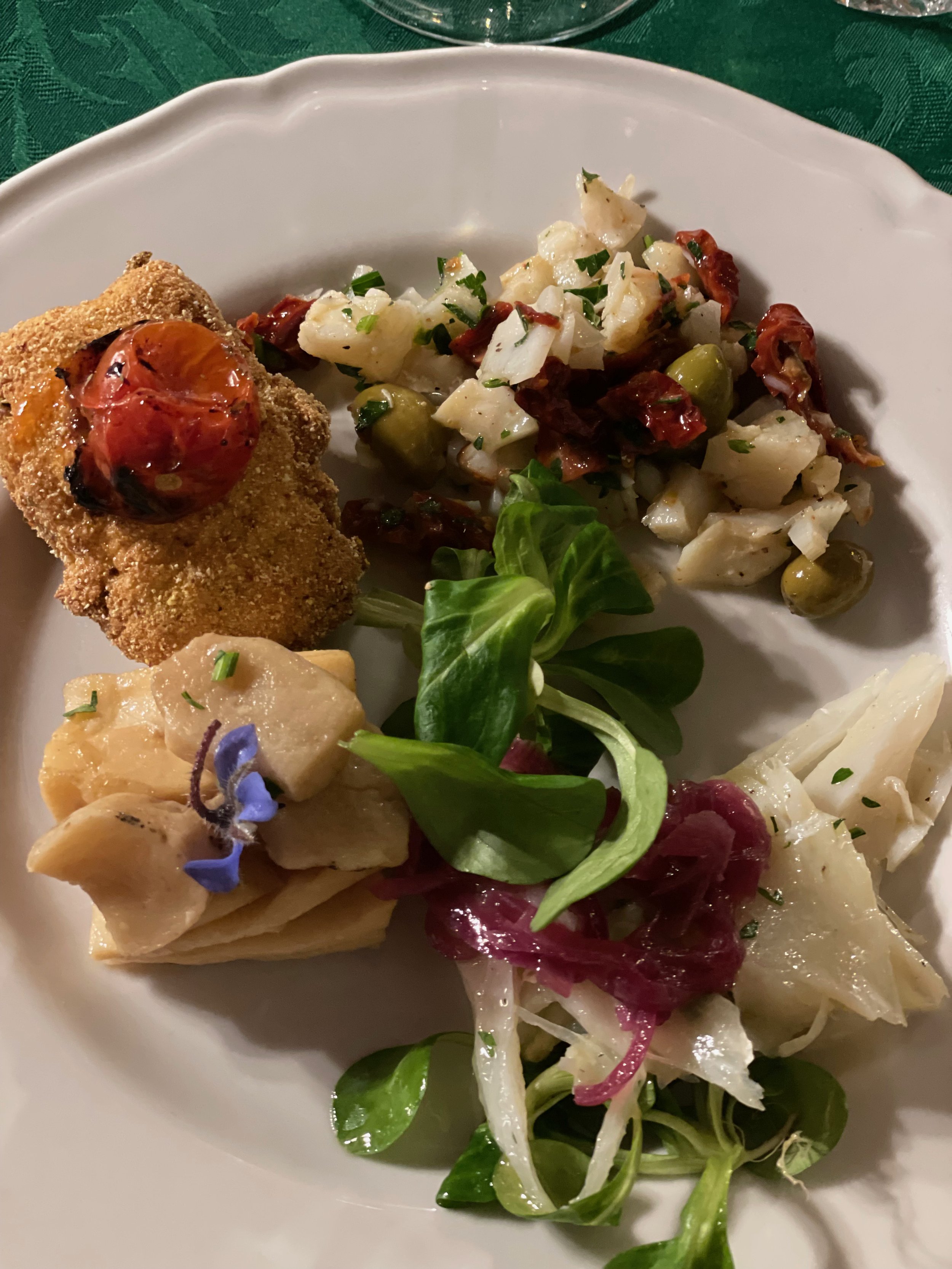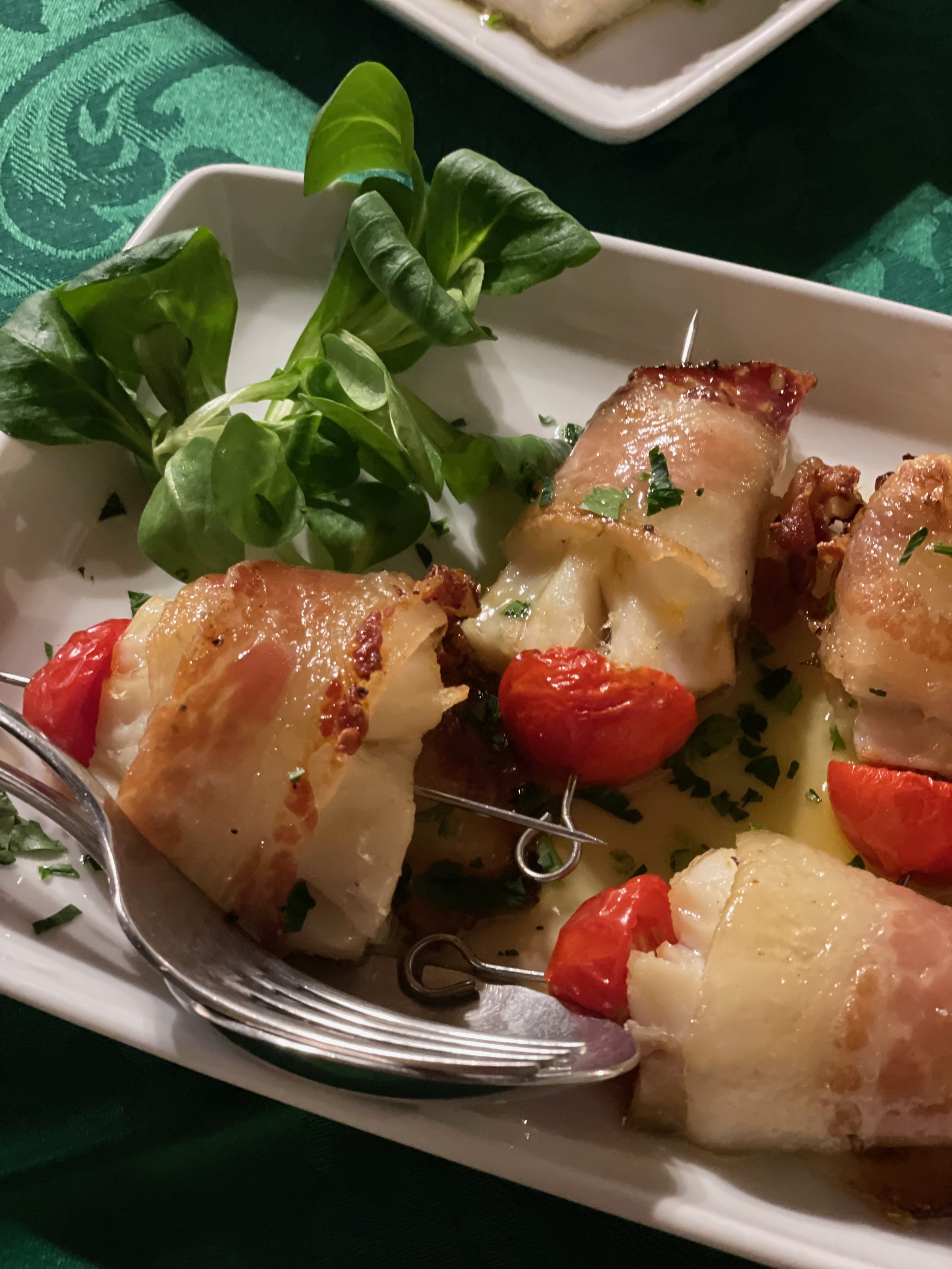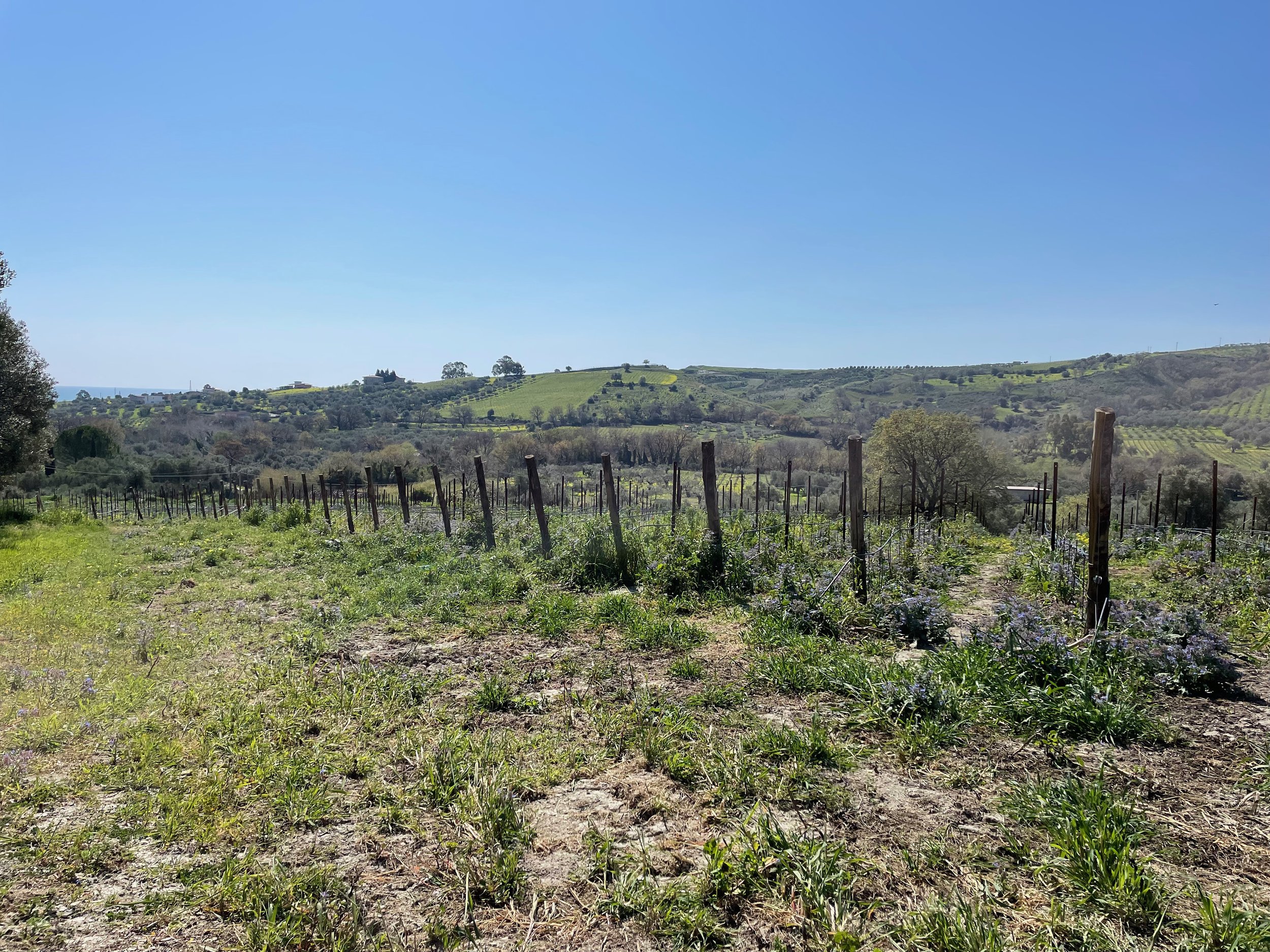Antonella Lombardo
about Antonella Lombardo:
Antonella Lombardo makes some of the best white wines in our selection. She would stand out in any region of Italy, but she stands out particularly in Calabria, which is not yet known for good white wine. Drinking her new vintage in a local restaurant with a feast of different dishes featuring the typical Calabrian ingredient, stockfish (air-dried cod) was a high point of a recent trip to the south of Italy. If the quality of these wines is indicative of what is possible in Calabria, the next few years are going to be very exciting.
Calabria has a winemaking history that goes back to the Greek occupation of this part of Italy, which began around the eighth century B.C. Antonella showed us a number of ancient ‘palmenti,’ which in this region are open-air stone winemaking vats; they were all over the hillsides near her property, giving witness to perhaps several thousand years of winemaking tradition.
Antonella left Calabria at the age of 18 and went to Milan to study the law, and then to practice. She eventually started taking sommelier courses, and became completely hooked on wine, which can happen to anyone; then, unlike the rest of us, she returned home, and decided to start making her own. She started consulting with the agronomists Stefano Dini and Dario Ceccatelli, who advised her in buying vineyards near the coastal town of Bianco, where she grew up, on the Ionian coast of Calabria. Once the vineyards, planted within sight of the ocean on rolling hills of limestone-rich clay, were productive she decided to hire the enologist Emiliano Falsini, who we are already familiar with from his excellent work at Girolamo Russo. Indigenous varieties, careful vineyard work, attentive but not intrusive winemaking, all fired by Antonella’s fierce enthusiasm for the project were all promising; now she has bottled wines to show us, and unsurprisingly they are excellent.
_____________________________________________
The wines:
(all under screw cap, fortunately)
Rosato ‘Charà’, Nerello Mascalese
This Nerello Mascalese rosé is made by the direct press method, not as a by-product of red winemaking, so the harvest timing is for rosé. Fermented using indigenous yeasts and a ‘pied de cuve’, then aged in stainless steel and bottled in the spring following the vintage. Nerello Mascalese makes excellent pink wine.
Very pale topaz pink in color, typical of the variety (rosés from Etna look just like this) ; mouthwatering aroma of red fruits, watermelon; same fruit flavors on the palate, bone dry, very long and distinctive. It would make a great dry aperitif but particularly good with food, with any number of fish dishes, roast pork, roast chicken…
greco di bianco Calabria Bianco IGT
Made of the semi-aromatic Malvasia di Lipari, referred to here in Calabria as Greco di Bianco (Bianco being a nearby town.) Left in contact with the skins for almost a day in the press, then fermented (using indigenous yeasts with a ‘pied de cuve’) and aged in stainless steel, bottled in the spring following the vintage.
Bright pale yellow with a golden glint; amazing aroma and flavor, rich with floral and fruit notes including jasmine and apricot; bone dry on the palate, very long finish. This is the first excellent white wine I’ve had from Calabria; if you like really expressive white wine you have to try it. If you drink dry Riesling you have to try it.
‘Autoritratto’ Mantonico Calabria IGT
‘Autoritratto’ means ‘self-portrait.’ Mantonico is a rare but very promising variety indigenous to Calabria. Mantonico berries have thick skins, so the bunches are only given an hour of skin contact before pressing, to extract aromatic character from the skins.
Extremely distinctive white wine. Luminous pale yellow; smells and tastes like lemon-peel and musk; acidity is fresh but the texture is thicker than the Greco Bianco, presumably due to maceration with the skins. Very long finish. One of the most striking white wines we import. I wouldn’t be surprised if this ages well but it’s too soon to tell.
Greco di Bianco ‘Cheiras’
Dessert wine made from Greco is a tradition in this part of Calabria. Antonella doesn’t like dessert wines, so she decided to vinify air-dried Greco as a dry wine, with skin contact. The fruit is partially dried on the vine, then spends another 20 days of drying on racks in a well-ventilated space; the grapes are individually de-stemmed, by hand (!), then a very slow fermentation takes place on the skins, using indigenous yeast. The wine spends another 18 months on the fine lees before bottling.
Another extremely distinctive white wine from this striking producer. Pale gold in color, chewy in texture, densely flavored, entirely different in texture and flavors from the Pi Greco. Almost drinks like a red wine, could be used as a ‘vino da meditazione’ with nuts after dinner, or with more substantial seafood dishes…roast pork…



